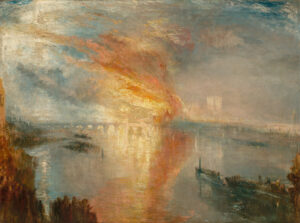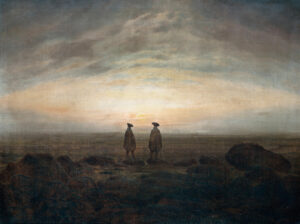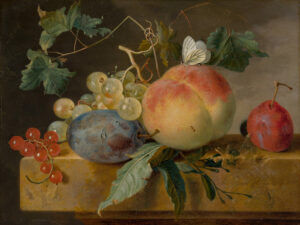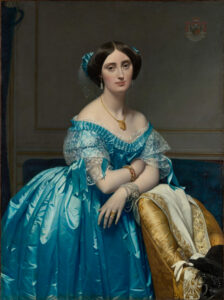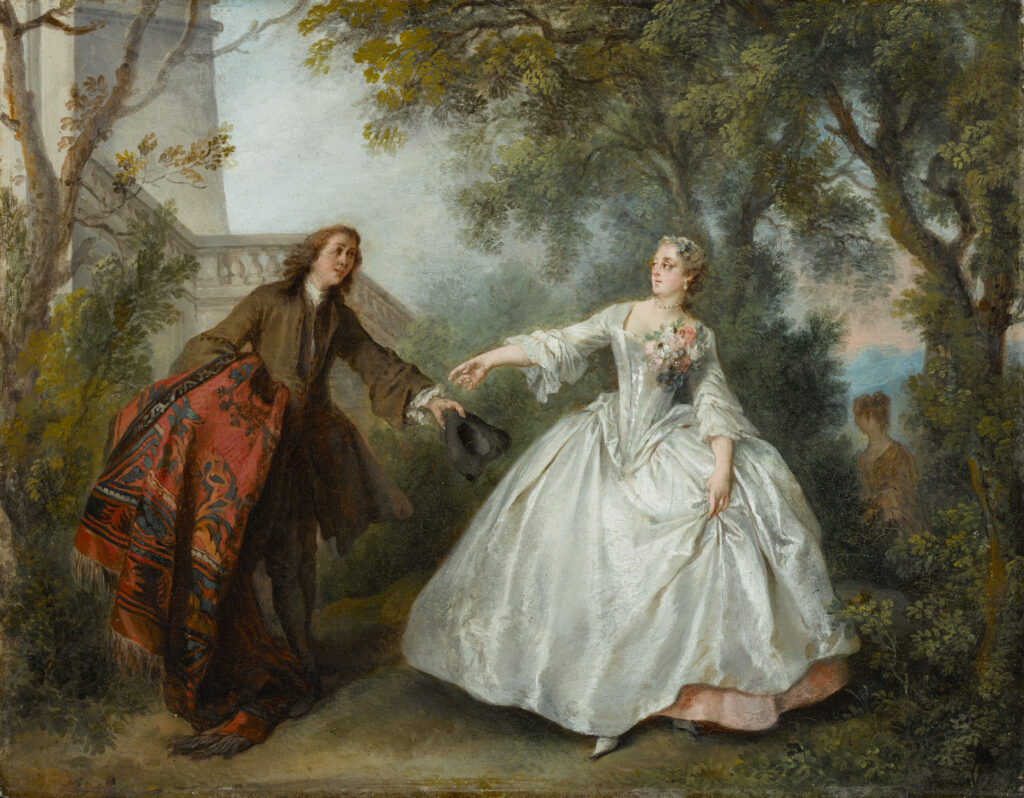
Lancret brilliantly transposes La Fontaine’s wit into this gallant garden scene where amorous wordplay unfolds.
The artist captures the moment when the lady, resplendent in her pearl-white silk gown adorned with roses, reprimands her suitor Nicaise for his clumsy eagerness. The striking contrast between the aristocratic elegance of the beauty and the bourgeois ardor of her lover reveals the painter’s psychological subtlety.
In this verdant theater with vaporous foliage, Lancret deploys his refined palette of tender greens and powdered golds, characteristic of Rococo art. The palatial architecture in the background evokes an opera set, amplifying the spectacular dimension of this comedy of manners where courtly love clashes with social conventions in a ballet of suspended gestures.
Work Details
- Nicaise, Nicolas Lancret, 1738
- 11 x 14 1/8 in. (27.9 x 35.9 cm)
- The Clark Art Institute, Williamstown
- https://www.clarkart.edu/ArtPiece/Detail/Nicaise
Nicolas Lancret (1690-1743) embodies the French Rococo spirit. Born into a modest family, he quickly transcended his origins through exceptional talent. Disciple and rival of Watteau, he excelled in fêtes galantes and genre scenes, developing a more narrative and less melancholic personal style than his master. Admitted to the Royal Academy in 1719 with Earth (allegory of the Four Elements), he rapidly became one of the most sought-after painters by Parisian aristocracy.
Official painter to Louis XV, he immortalized 18th-century aristocratic lifestyle, executing numerous commissions for Versailles and private mansions. His virtuoso technique rivaled Boucher’s mastery. Master of gallant conversation and theatrical scenes, Lancret freely drew from the literary repertoire of La Fontaine, Molière, and Marivaux to enrich his compositions. His oeuvre of over 800 paintings bears witness to salon civilization where French wit radiated throughout Europe.


